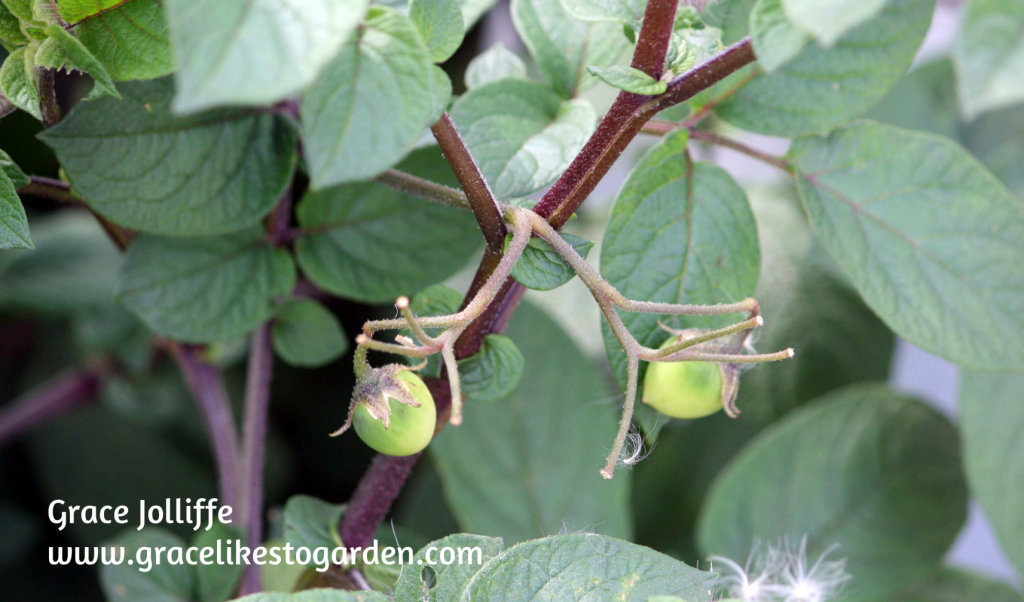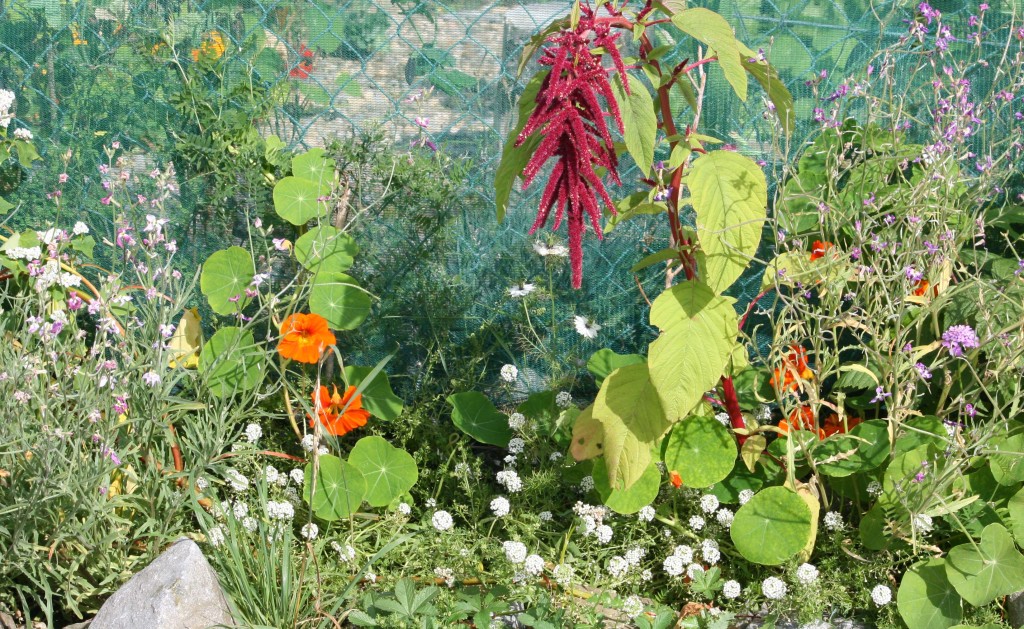 Well, yesterday’s gardening miscellany’s post really shook things up. There were lots of fun answers to my questions on the various social networks – including ‘space vegetable beamed down from unknown planets’ and ‘genetically modified monsters capable of eating my garden up in one big evil mouthful.’
Well, yesterday’s gardening miscellany’s post really shook things up. There were lots of fun answers to my questions on the various social networks – including ‘space vegetable beamed down from unknown planets’ and ‘genetically modified monsters capable of eating my garden up in one big evil mouthful.’
I must admit I couldn’t resist letting my imagination fly away but then my ‘real job’ is fiction writer so I just can’t help myself.
No fiction writer worth their salt should have ordinary things growing around the garden – there surely has to be at least one strange, man-eating-mutant ‘thingie’ hiding among the veggies?
Sadly, it seems not and thanks to two wonderful readers the mystery has been solved:
POISON WARNING
Jen McDonald is a fungal biologist, plant connoisseur, knitter, animal-lover, world traveler and is currently studying fungal ecology and evolution at Western University in Canada and Jen wrote:
“I have some answers for you about your TomTato question. Unless you specifically planted one, all that you have is a potato plant (sorry to burst your bubble!). Potatoes always produce above-ground fruit, since that is their method of reproduction (seeds contained in fruits). Potatoes and tomatoes are in the same family of plants, and so it makes sense that the fruit would look the same. On potato plants they’re often called “potato apples”, since they’re much denser and less juicy than a tomato. They also mature to purple, not red. Something that not many people know is that potatoes are actually underground storage organs that are STEMS, not roots. It makes sense that a discarded potato plant would produce tubers off the stem, as long as that stem is shaded or buried. Under times of intense stress (like an uprooted, discarded potato plant), the plant might also be induced to store starch in growths directly off the stem, even if they’re above ground. Each one of those storage tubers could then be used by the plant for energy production to be able to regrow new shoots when resources are no longer limiting. That’s the reason why potatoes turn green and start growing “eyes” when exposed to sunlight. A word of warning: unless you know for a fact that these are TomTatoes (which I find unlikely unless they were specifically purchased and discarded), don’t eat the potato apple. They are highly toxic, and while it wouldn’t kill a full-grown adult (it could kill a small child), it will make you so sick you’d wish you were dead!’

HIGHLY POISONOUS POTATO APPLES!!!
Jen has a wonderfully witty blog about all things botanical over at www.botanicalmusings.blogspot.com
POISON WARNING
Another reader, CPayne also helped out in the comments section pointing out that:
‘Those little green “tomatoes” are just the fruit of the plant. They produce seeds like tomatoes do. We just don’t eat or use those seeds. They are also poisonous (don’t forget, tomatoes and potatoes are related to nightshade). This year my potatoes also produced large fruits. Potatoes don’t compost that quickly and could have hitched a ride in your soil, or perhaps a squirrel or other critter planted it Potatoes are kind of viney and the tubers will grow up the stalk. Thats why you hill potatoes by mounding soil or mulch around the base. It also prevents them from turning green, which you don’t want. There are indeed tom/pot plants but they are usually grafted and it’s not something you are likely to end up with by accident.’
So now you know, my potato-tomatoes weren’t strange invisble imports that somehow crept into my garden and planted themselves before growing into something bizarre – they are actually highly toxic potato-apples, cousins of the deadly nightshade and equally deadly.
So, whatever you do, don’t eat them apples…
Thanks to everyone who commented here and on the social networks – it’s been fun.
Back soon,
Grace
P.S.
I definitely didn’t plant this magnificent red specimen…

 Well, yesterday’s gardening miscellany’s post really shook things up. There were lots of fun answers to my questions on the various social networks – including ‘space vegetable beamed down from unknown planets’ and ‘genetically modified monsters capable of eating my garden up in one big evil mouthful.’
Well, yesterday’s gardening miscellany’s post really shook things up. There were lots of fun answers to my questions on the various social networks – including ‘space vegetable beamed down from unknown planets’ and ‘genetically modified monsters capable of eating my garden up in one big evil mouthful.’










Recent Comments